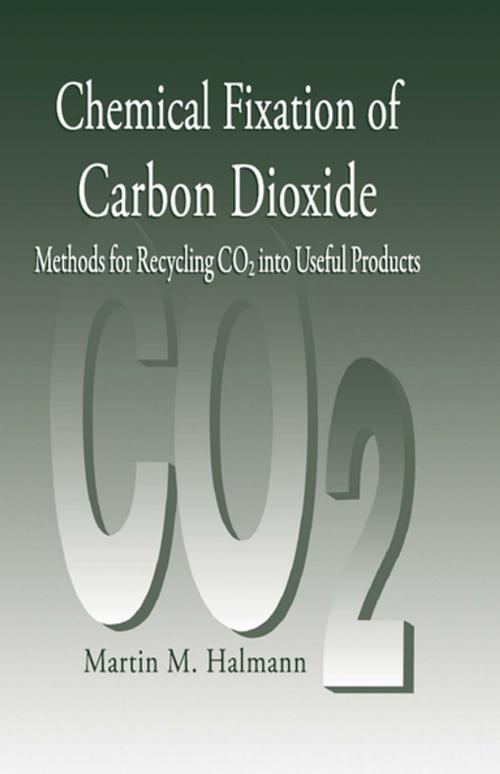Chemical Fixation of Carbon DioxideMethods for Recycling CO2 into Useful Products
Nonfiction, Science & Nature, Science, Chemistry, Organic, General Chemistry| Author: | Martin M. Halmann | ISBN: | 9781351461627 |
| Publisher: | CRC Press | Publication: | May 11, 2018 |
| Imprint: | CRC Press | Language: | English |
| Author: | Martin M. Halmann |
| ISBN: | 9781351461627 |
| Publisher: | CRC Press |
| Publication: | May 11, 2018 |
| Imprint: | CRC Press |
| Language: | English |
Chemical Fixation of Carbon Dioxide presents new concepts and results from research into the problems caused by increasing levels of carbon dioxide. The book discusses the limitations of natural plant photosynthesis as a sink for carbon dioxide and emphasizes chemical fixation as an important alternative. A number of significant topics are covered, including new coupling reactions for producing compounds such as carbamates, urethanes, and heterocyclic structures; new catalyst systems, particularly for methanation and methanol synthesis; the use of homogeneous solution photosensitizers and heterogeneous semiconductor photocatalysts to photoreduce carbon dioxide with visible light and sunlight; and electrochemical reduction.
This book will be a useful reference for organic chemists working on environmental problems, chemical engineers, environmental chemists, professionals at research facilities, and students.
Chemical Fixation of Carbon Dioxide presents new concepts and results from research into the problems caused by increasing levels of carbon dioxide. The book discusses the limitations of natural plant photosynthesis as a sink for carbon dioxide and emphasizes chemical fixation as an important alternative. A number of significant topics are covered, including new coupling reactions for producing compounds such as carbamates, urethanes, and heterocyclic structures; new catalyst systems, particularly for methanation and methanol synthesis; the use of homogeneous solution photosensitizers and heterogeneous semiconductor photocatalysts to photoreduce carbon dioxide with visible light and sunlight; and electrochemical reduction.
This book will be a useful reference for organic chemists working on environmental problems, chemical engineers, environmental chemists, professionals at research facilities, and students.















